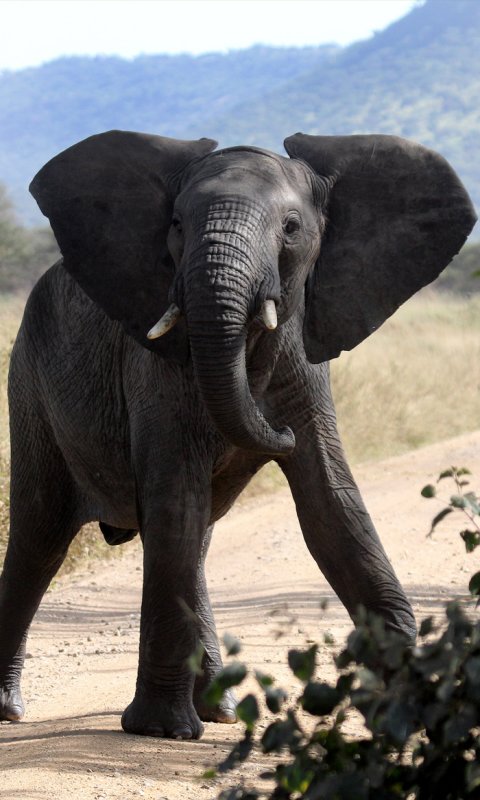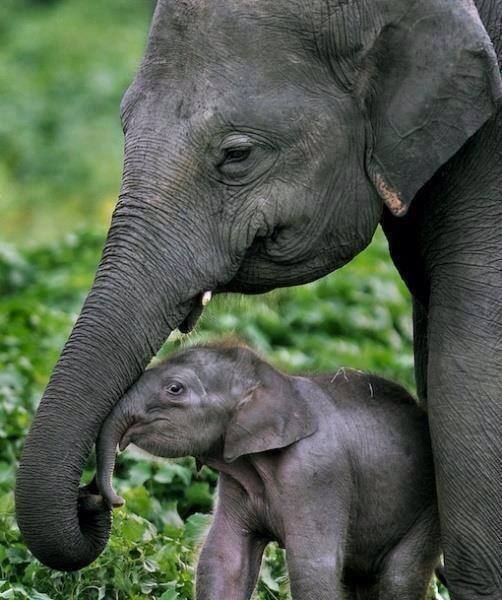MAJOR WILDLIFE CONSERVATION STORIES

91 Elephants Slaughtered in Zimbabwe National Park
HWANGE, Zimbabwe (AP) — The stench of rotting elephant carcasses hangs in the air in western Zimbabwe, where wildlife officials say at least 91 elephants were poisoned with cyanide by poachers who hack off the tusks for the lucrative illegal ivory market.
Massive bones, some already bleached by the blistering sun in the Hwange National Park, litter the landscape around one remote watering hole where 18 carcasses were found. Officials say cyanide used in gold mining was spread by poachers over flat "salt pans," also known as natural, mineral-rich salt licks. They say lions, hyenas and vultures have died from feeding on contaminated carcasses or drinking nearby.
"The magnitude of what we are witnessing today is much higher than what has occurred previously," environment minister Saviour Kasukuwere told reporters on a trip to the park Monday.
Cyanide attacks the bloodstream, kills almost instantly and causes rapid decomposition. Most of the poisoned elephants died in the past month. The chemical is commonly used by illegal gold panners to separate the metal from surrounding ore and is easily available.
Nine suspected poachers have been arrested this month after the biggest, most brutal poaching spree on record. Three men were sentenced to up to 16 years in jail. The Hwange park, stretching over 14,000 square kilometers (5,400 square miles), has one of the highest concentrations of elephants in Africa.
Kasukuwere, newly appointed to the environment ministry after disputed elections won by longtime President Robert Mugabe in July, said Zimbabwe will intensify efforts to campaign among world nations — including Asia, where there is the highest demand for ivory — to curb a trade declared illegal by the Convention on International Trade in Endangered Species.
Tusks of the poisoned elephants are thought to have been smuggled into neighboring South Africa through illicit syndicates that pay desperately poor poachers a fraction of the $1,500 a kilogram (2.2 pounds) that ivory can fetch on the black market.
"We will cooperate with international organizations such as Interpol to crack down on the pay masters. So the war is on, it's a war which we will win, we are not going to surrender," Kasukuwere said.
The state Environmental Management Authority is planning to burn the elephant carcasses and call in experts to detoxify the affected areas, beginning with digging out the salt licks and removing the top layers of soil contaminated by the cyanide granules.
Officials believe at least two deeply drilled wells supplying the water holes may have also been contaminated and will likely have to be sealed. New wells will probably be drilled away from the tainted ones.
"We will drill more boreholes in the park because these criminals target areas where there is a shortage of water," said Kasukuwere.
But Zimbabwe's cash-strapped wildlife and environment authorities say they are underfunded, understaffed and poorly equipped because of the nation's troubled economy.
Kasukuwere said Hwange park, Africa's third largest wildlife sanctuary after the Serengeti in Tanzania and South Africa's Kruger National Park, has only about 150 rangers and few fully operational off-road vehicles for an expanse that ideally should have a staff of at least 700.
Nor can authorities afford to maintain helicopters or fixed-wing aircraft spotter patrols. The environment minister said officials have begun to work with local village communities on the fringe of the park to report the presence of cyanide and that four kilograms (eight pounds) of the deadly poison have so far been recovered.
Grown elephants, the world largest living land mammal, eat about 300 kilograms (660 pounds) of vegetative fodder a day. In the current dry season they drink water at the pans, where the salt and other minerals left by evaporation make them thirstier.
Soaring vultures, wildlife rangers say, are often the first sign visible from considerable distances of an illegal kill by poachers in a nature preserve.
This time in Zimbabwe, scores of vultures, the first predators at a kill, have died from the cyanide. Rangers say their absence makes the ecological impact of the poisonings much harder to fight and control.
________________________________________________________________________________________________________________________
Cure Hemorrhoids—Asian Elephant Leg Bone
Besides being killed for its ivory horn, the Asian elephant is also slaughtered for its feet, leg bones, skin and tail hair. A paste made from the soles of its feet is used to treat hernias, and a paste from ground-up leg bones treats hemorrhoids. Its skin can be used in a paste to treat fungal infections. Its tail hair, most importantly, when worn as a wig, can ward off evil spirits and help attract women. The Burmese believe hanging rhino tails outside of one's home can bring good luck to businesses.
____________________________________________________________________________________________________________________________
Rhinoceros Horns Ward Off Demons
Rhino horns are used for medicinal purposes, believed by some to cure everything from headaches and hangovers to cancer. And let's not forget demon possession. Some African nations have tried to combat poaching by using drones, but rhinos are still poached because of the market for their precious horns. Currently, at least one rhino subspecies, the Javan rhino, is extinct in Vietnam, while neighboring Indonesia only has 35 remaining.
_____________________________________________________________________________________________________________________________
Rhinoceros Poaching in South Africa Hits New Record

JOHANNESBURG (Reuters) - The number of rhinos killed by poachers has hit a new annual record in South Africa, raising worries of a downward population spiral in a country that is home to almost all of Africa's rhinos.
As of the end of September, 704 rhinos had been killed by poachers in South Africa, exceeding the annual record of 668 set in 2012, according to data provided by the Environmental Affairs ministry on Tuesday.
If the trend keeps at its current pace, more than 1,000 rhinos would be killed in 2014, putting the species on the brink of a population decline that the ministry has said could lead to the end of wild rhinos in about a decade.
The greatest threat to the estimated 22,000 rhinos in South Africa comes from those trying to cash in on the black market value of their horn, which sells at prices higher than gold.
Many of the poachers come from neighboring Mozambique and sell the horn to crime syndicates to feed rapidly rising demand in Southeast Asia, where the horn is thought by some to cure cancer and tame hangovers.
"We need people to be ashamed of this. The fact that our rhinos are killed is because there is a market out there. There are people who are coming to steal our heritage," said Fundisile Mketeni, a top biodiversity official at the ministry.
He said a baby boom among rhino stocks is softening the blow, while the ministry has mounted a global campaign to shut the doors for illegal exports to places such as Vietnam, China and Thailand, which are the main consumers of the contraband.
ARMS RACE
Most of the killings are taking place in the flagship Kruger National Park, which borders Mozambique. The park covers an area about the size of Israel and has been the focus of an arms race between poachers and rangers.
The park service has been turning its rangers into soldiers, using drones to patrol airspace and sending out crack units by helicopter once suspected poachers have been sighted.
"The poaching syndicates are determined to carry on with their nefarious acts, using the poverty that is prevalent in Mozambique and South Africa to recruit poachers," said Ike Phaahla, a spokesman with South African National Parks.
Up until about 2010, only a handful of rhinos were poached but the number shot up when rumours circulated at about that time that a Vietnamese minister's relative was cured of cancer by the horn. There is no basis in science to support the claim.
In traditional Chinese medicine, the horn was used to treat maladies from rheumatism to devil possession. Now, many newly rich Vietnamese consume it after a hard night of partying.
Rhino horn, once seen as a treatment only for royalty, is being swallowed by a small segment of the Vietnamese population who can afford prices of about $65,000 a kilogram, conservation groups say.
Due to the high costs, much of the so-called rhino horn sold at pharmacies in major cities is fake, with buffalo horn the main substitute.
"There is a small group who have the money for rhino horn. We need to get out scientific evidence to show the people of Vietnam that it doesn't work," Vo Tuan Nhan, vice chairman of the Vietnamese parliament's science and environment committee, told a seminar in Johannesburg last month.
